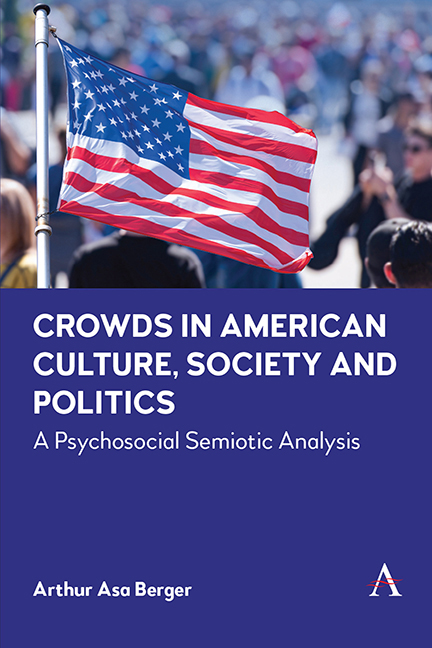7 - Crowds and the January 6, 2021 Insurrection
Published online by Cambridge University Press: 28 February 2024
Summary
Along with 9/11 when the World Trade Center buildings were destroyed by terrorists using airplanes as missiles, 1/6 is a day of monumental importance in American history. But unlike 9/11, the terrorists attacking the Capitol building were not foreign terrorists but American ones.
The attack on the Capitol raises a question: when does a crowd become a mob? The answer would seem to be that when a crowd becomes highly motivated and excited and loses its sense of moral composure, it becomes a mob (Figure 3.2).
Le Bon has a chapter on “Crowds Termed Criminal Crowds?” in which he explains that the people who take part in these crowds/mobs are open to suggestion and believe they are acting “in obedience to a duty,” which with the 1/6 insurrection was following Trump's and several other Republican politicians’ instructions to “fight like hell” and, by implication, prevent Joe Biden, who it was said had stolen the election, from being installed as president.
Many of the members of the mob that attacked the Capitol on 1/6 have said that they believed they were acting on the orders of President Trump and that their behavior was not criminal but the behavior of true patriots.
An article, “90 Seconds of Rage on the Capitol Steps” by Dan Barry, Alan Feuer, and Matthew Rosenberg, on the first page of the Sunday edition of The New York Times, describe the behavior of seven rioters who worked in concert perpetrating violence for 90 seconds during the riot (October 17, 2021: 1):
[…] Prosecutors and congressional investigators seem to understand how a political rally devolved into an assault on the citadel of American democracy and those who guard it. They are drilling down on whether the riot was organized and what roles were played by far-right extremist groups, various Trump supporters and Mr. Trump himself.
But it may also help to slow down the video evidence, linger on those 90 seconds on the Capitol steps and trace back the roots of the violence and its perpetrators. Doing so provides a close-up view of how seemingly average citizens—duped by a political lie, goaded by their leaders, and swept up in a frenzied mob—can unite in breathtaking acts of brutality.
- Type
- Chapter
- Information
- Crowds in American Culture, Society and PoliticsA Psychosocial Semiotic Analysis, pp. 73 - 76Publisher: Anthem PressPrint publication year: 2023

